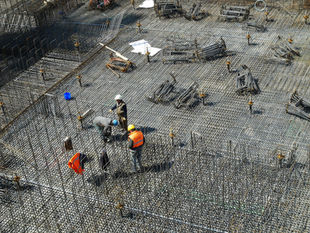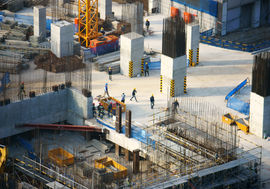
Civil & Structural Engineering

Civil and structural engineering is a branch of engineering focused on designing, constructing, and maintaining infrastructure and buildings. Civil engineers handle overall project management, site development, and environmental considerations, while structural engineers specifically ensure the safety and integrity of structures by analyzing loads and materials. Together, they work to create safe, functional, and sustainable environments, addressing challenges like urbanization, transportation, and resource management.
Civil & Structural Engineering Services We Provide

Steel & Aluminum Structures
Steel structures are architectural and engineering designs primarily made from steel, known for their strength, durability, and versatility. They are commonly used in buildings, bridges, and infrastructure due to their ability to withstand heavy loads and resist environmental challenges. The use of steel allows for innovative designs, quicker construction times, and efficient use of materials.

Structural Analysis
Structural analysis involves evaluating and understanding the behavior of structures under various loads and forces. This process ensures safety, stability, and functionality by assessing factors like stress, strain, and deflection. Engineers use mathematical models and simulations to predict how structures will perform in real-world conditions, ultimately guiding design decisions.

Seismic Analysis
Seismic analysis evaluates how structures respond to seismic activity, such as earthquakes. It involves assessing forces, vibrations, and potential damage to ensure safety and stability during such events. This analysis helps engineers design buildings that can withstand seismic loads, ultimately reducing risks to occupants and property.

Foundation Design & Engineering
Foundation design and engineering involve creating the base that supports a structure, ensuring it can safely transfer loads to the ground. This process includes analyzing soil properties, determining load requirements, and selecting appropriate foundation types, such as shallow or deep foundations. Effective foundation design is crucial for the stability and longevity of structures, as it directly affects their performance under various conditions, including settlement and lateral forces.

Reinforce Concrete
Reinforced concrete is a composite material that combines concrete with steel reinforcement bars (rebar) to enhance its tensile strength. This combination allows structures to resist various forces, making them more durable and capable of withstanding loads such as bending and shear. Commonly used in beams, slabs, and columns, reinforced concrete is essential in modern construction due to its ability to provide both strength and flexibility.















